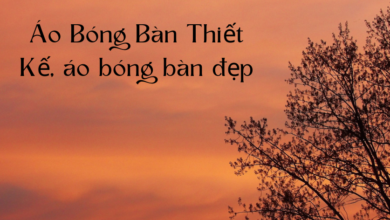salina post: Complete Guide

What is your precious post-salina post going to do for your brand? Or will it just look like the same old tired, tired salina post?
If you’re not excited about your new post-salina post, then you’re definitely not interested in it.
The salina post is a fundamental part of the salina experience. It makes the user feel welcome, contribute to the community and provide a fulfilling and valuable service.
What it does for your brand is create a community around your product; people feel part of something bigger than themselves. They join because they want to be part of something special and sacred.
Now, if you can achieve this by adding some shiny new features that make it look different from all other posts on the subreddit, then fantastic! But, if not (and you won’t) then why bother creating a whole new category?
-
The population of Salina, Kansas
Salina, KS is a town of approximately 150,000 people in the southwest part of Kansas. It is a small town nestled along the Kansas River. The population has grown over the years and now stands at about 170,000 people. Salina is known for its arts scene with a large number of art galleries and museums.
The best way to get to know someone from Salina is through their social media presence and it can be a great opportunity to reach out to them as a business. One thing you should consider when reaching out to someone from Salina is that they are likely working on something that would interest your company, so make sure not to give away too much information about your company or product until you have found out more about who they are and what they do before you start pitching your idea.

This post was originally published at http://blog.salinapost.com/2013/10/post-salina-post-salina-post/
-
History of Salina, Kansas
Salina is a town in eastern Kansas, United States. It’s about 25 miles east of Kansas City, Missouri and about 40 miles northeast of Wichita, Kansas.
The first salina post was on October 1, 2010 and was a response to an open letter from Salina residents (which can be read here) to United States Senator Pat Roberts (R-KS). The response was in response to Roberts voting against legislation that would have given Salina $5 million in federal funding to help rebuild the town after the Black Hawk War.
Though the post came off as a joke, it received a lot of attention and gained a lot of followers. The post has been reposted by several other people since then and received 280 likes so far.
-
Economy of Salina, Kansas
Salina is a city in the US state of Kansas, located at the intersection of US Highway 50 and US Highway 2. As of the 2010 census, Salina had a population of 11,906.
This article has been featured before (in 2015) in my blog post “The Right Way to Start a Startup”.
-
Culture of Salina, Kansas
Salina, Kansas is a place that, until recently, was little more than a name on a map. Not much has happened here in the last 30 years. It is often misunderstood as a place of little consequence. The fact is that Salina has seen many changes over the years and many — if not most — of those changes have been positive.
The story of salina post is one of these positive changes, in which employees have been given opportunities to grow and thrive within the company, while sharing their knowledge and skills with the outside world. Moreover, we believe that salina post is one of many examples in which you can find value in an environment where:
- the people are happy;
- the work is meaningful; and
- the company produces results.

-
Education in Salina, Kansas
Salina, Kansas is a small town in the middle of the state, on the banks of the Saline River. It’s home to about 14,000 people and is known for its thriving agricultural industry and its education system. The area has a very large number of farms and an education system that caters to them all.
The school district doesn’t have any large-scale high schools or any vocational programs like manufacturing or retail do in other areas of the country. Instead, it focuses on teaching technical skills to students in different fields at different levels:
- Farmers/farmers-to-be
- Manufacturing/manufacturing-to-be
- Construction/construction-to-be
- Business/businesses-to-be
This focus on technical skills allows students to take advantage of this unique knowledge base as they advance through their education and careers. The district does not offer specialized training in fields like computer science, which are fairly common in other parts of the country; instead, students get two years of instruction (and one year of special training) on how to work with computers in all three main fields: farming, manufacturing and construction. Teachers also provide two years of training for management and leadership development. This allows students who might not be familiar with how computers work to gain that knowledge as they move through their education and careers.
The Salina school board voted unanimously last October to eliminate special academics instruction for agriculture students within the classroom if it means “lessening expenses” by shifting money elsewhere. This decision — accompanied by a letter from Mayor Bill Strunk highlighting the benefits of providing educational opportunities for farming students — was met with opposition from local farmers who felt that they were being penalized unfairly by having to pay other schools more than they were willing or able to donate toward their own costs. They also brought up concerns with funding cuts made by other parts of the state that would affect theirs as well as threats from nearby locations that would open up new opportunities if they weren’t cut out completely. Although there was some discussion regarding whether or not agriculture should be included as one field dedicated solely to teaching technical skills within high school curriculums (and no longer offered separately), this issue has been largely resolved since then—as far as I know—by improving teacher retention rates among high school teachers who teach agriculture courses (which has been done fairly consistently over several years). Most importantly though, this decision
-
Salina, Kansas in the News
Salina, Kansas is a town on the edge of the state known for its apple orchards and its industrial heritage. The town includes an old-fashioned hardware store, a historic railroad station, and outlying neighborhoods that have little in common with each other.
Then there is the Salina Post (aka The Salina Post or The Salina News). A weekly newspaper called the “Salina Post” has been published here since 1873. It covers local news and features stories from around the world, including one from today’s great Stanford debate team: [https://www.youtube.com/watch?v=PqMGB_VQN2k]

The Salina Post has been running for almost 150 years, beginning as a weekly edition of two newspapers printed by private citizens in 1873. In 1886 it became a daily paper and was published by brothers Jerome and James Dinsmore until 1901 when it was bought out by an investment group headed by J.D. Cox who owned it the rest of his life until his death in 1935.
In 1954, when Cox sold the paper to William Sizemore’s family, Sizemore personally took over as publisher until his death in 1963 after which period of ownership ended with Brown Jr.’s assuming control. Brown Jr.’s son Harry took over from 1967 to 1981 when he sold it to John Hummel Sr., who remained publisher until 2001 when he died without sons or heirs of his own (Hummel died in 2007). Hummel’s widow Barbara continued running the paper until 2002 when she sold it to Larry Shaver’s family who successfully continued publishing it into 2008 before Shaver sold it to Bob Kleinman’s family who purchased it back in 2010 (Kleinman died in 2015).
The Salina Post is currently owned by Shaver Holdings LLC which acquired control of its operations from Kleinman Holdings LLC in 2015 (although Shaver Holdings will continue printing copies themselves). This makes sense because they are a major investor in Humble Bundle so they feel they should have some say over what happens with this particular company — although we do hope that they eventually sell their share back to Shaver Holdings LLC so it can focus on selling software again!
-
Conclusion
To conclude this series, I would like to share my views on salinity. I will focus on the sea water question. Salinity, the ratio of dissolved salts in a liquid to the total amount of salt, is an important parameter for many organisms. These organisms include bacteria, algae and fish; these organisms need salt for their survival. Salinity affects the fish’s ability to swim by affecting water flow rate and viscosity; it also affects the growth of fish eggs and larvae.
The main point here is that salinity affects all living things: plants grow better when there are more salts in their soil; plants eat more when there are more salts in their food; plants absorb more radiation when they have a higher salinity; marine animals have longer life span when they live in salty ocean water (since salt causes them to produce proteins, which help them absorb more energy from sunlight); and so on…
Salinity is essential for life, so it’s crucial for humans as well. Salinities usually range from 100-10,000 ppm (parts per metric units). For example, the salinity level in your tap water may be around 0.01 or 0.02 or 0.05 or something like that ppm level depending on where you live (and how you measure). So if you’re drinking tap water — which most people do — it could be very low and you won’t notice much change at all even if you notice that it’s very salty since salinities at 0 ppm are very low as well (like I said before, we’re talking about salt here). However if you’re washing dishes or washing clothes with tap water — something that most people do -it’s possible that your dishes could taste almost completely different than if they were washed with regular tap water since your dishwasher makes use of different chemicals than regular tap water.
However theoretically speaking what I’ve said above can’t be true because there isn’t any such thing as “regular” tap water to begin with (there are only few types of “tap” sources like running faucets). And even though we don’t really know how much toxins might be present in tap water — whether it’s actually good or not — we also don’t know exactly how much toxins might exist in our food either (like again: we don’t know exactly how much toxins might exist in our food because we haven’t gotten enough data yet).



